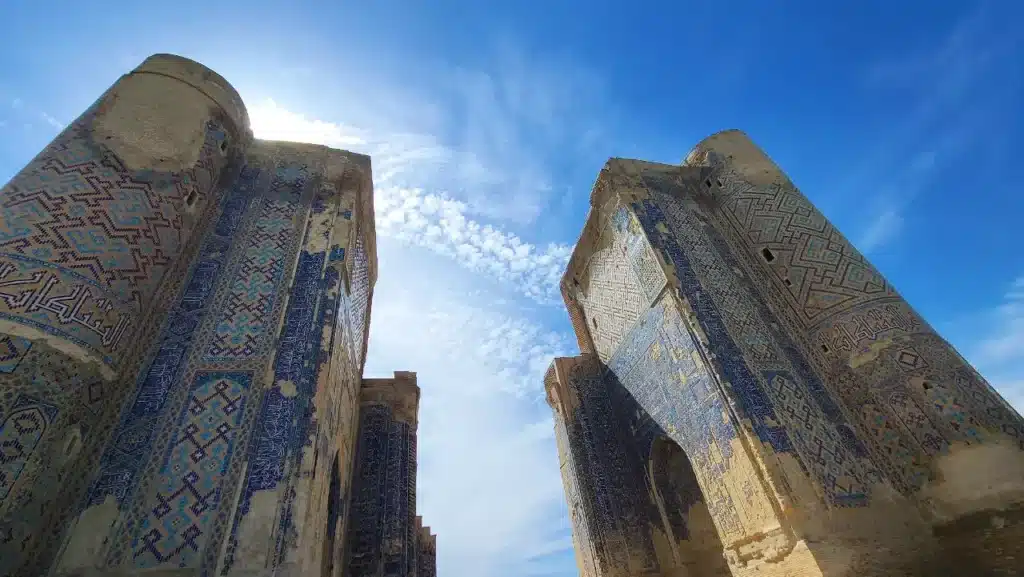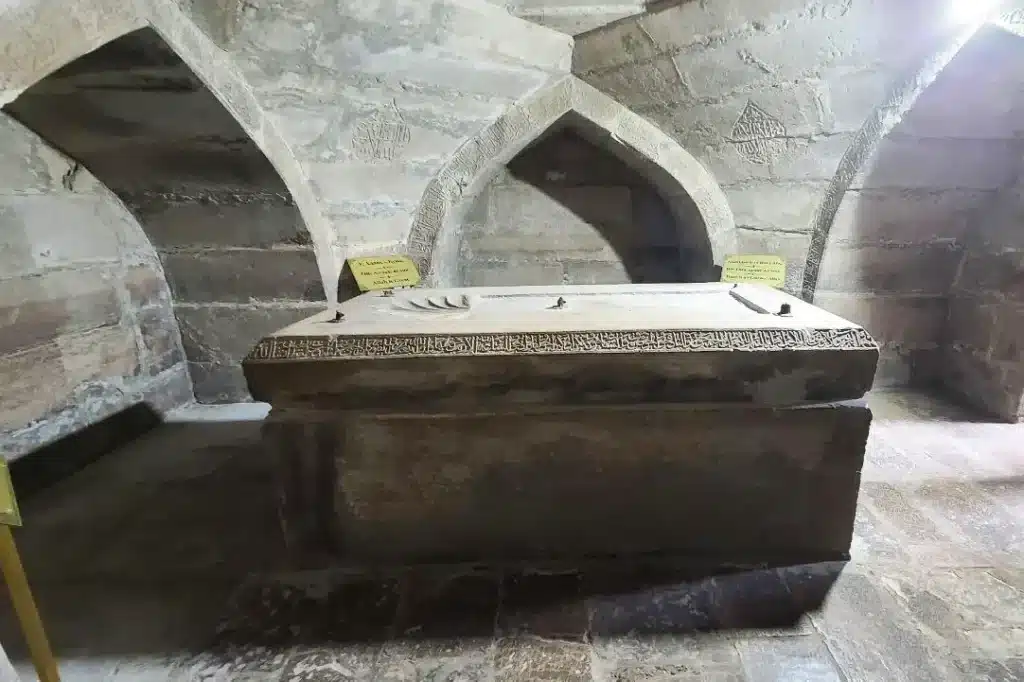Shahrisabz – The Timeless City of Timur’s Legacy
Explore the ancient city of Shahrisabz, the birthplace of Amir Temur and a treasure trove of monumental Timurid architecture. Once known as Kesh, this UNESCO-listed city in southern Uzbekistan offers a living tapestry of history, romance, and enduring craftsmanship.
A Green Oasis in the Mountains
The name Shahrisabz means “Green City”, and even today, the approach to this historical gem is marked by lush gardens, orchards, and water channels that breathe life into its landscape. As early as 1404, the Spanish ambassador Ruy González de Clavijo described Shahrisabz as “a city surrounded by canals and gardens, protected by high earthen walls and a moat.”
Strategically located in the foothills of the Zeravshan Mountains, Shahrisabz was once a major cultural and political hub of Central Asia. Its ancient roots trace back to Kesh, a city referenced in classical sources and unearthed by archaeologists near modern-day Kitab.
The Birthplace of Amir Temur
What truly elevated Shahrisabz from a provincial town to a symbol of power was its connection to Amir Temur (Tamerlane) — the legendary 14th-century conqueror. Born in nearby Hodja-Ilgar village in 1336, Timur made Shahrisabz his ancestral home and nearly turned it into the capital of his empire.
Even after he chose Samarkand as his political center, Timur lavished monumental buildings and infrastructure upon Shahrisabz. His devotion was personal: his father and close relatives were buried here, and the city became a sacred place of legacy and pride for the Timurid dynasty.
Ak-Saray Palace – A Monument to Power
The most awe-inspiring remnant of Timur’s vision is the Ak-Saray Palace (“White Palace”) — a staggering architectural marvel, now a hauntingly beautiful ruin. Once towering over 50 meters, its colossal entrance gate still stands, bearing inscriptions and vivid mosaics that reflect the ambition of a ruler who declared:
“If you doubt our might — look at our buildings.”
The palace was constructed using labor and artistry brought from conquered lands, including Khorezm, Iran, and beyond, symbolizing the merging of diverse architectural traditions into a new Timurid style. Its once-polished tilework, grand iwans, and labyrinthine rooms stood as a testament to Timur’s vision of imperial magnificence.
Religious and Cultural Monuments
Shahrisabz was not only about power — it was a spiritual center adorned with mausoleums, mosques, and madrasahs.
🔹 Dorus Saodat Complex
A sacred necropolis where Timur intended to be buried alongside his family. Though he rests in Samarkand’s Gur-Emir, his unoccupied crypt in Shahrisabz is a site of immense historic and architectural value.
🔹 Dorut Tilavat Ensemble
Commissioned by Timur’s grandson Ulugbek, this complex houses the tombs of Temur’s father Taragay and his spiritual mentor Sheikh Shamsuddin Kulyal, encapsulating spiritual reverence in Timurid architecture.
The Walled City & Urban Planning
In 1378, Timur ordered the construction of fortified city walls around Shahrisabz’s core (hissar), complete with gates and moats. Though only sections remain today, their original scale — walls 11+ meters tall with semicircular towers every 50 meters — evoke the grandeur of a medieval stronghold.
The old city was structured around two intersecting main roads, with 52 residential quarters (guzars), narrow alleys, and community mosques — a layout typical of Timurid cities.
Traditional Markets & Living Culture
In the heart of Shahrisabz lies a historical Chorsu (covered market) — a cross-shaped domed bazaar, dating possibly from the 17th century. Though plainer than Samarkand’s counterparts, it reflects the city’s vibrant commercial life.
Nearby, traditional hammams (bathhouses) still operate, some rebuilt over their 15th-century foundations, complete with underground heating systems and domed chambers for relaxation and cleansing.
Vernacular Architecture & Daily Life
Shahrisabz’s few remaining historic residential homes offer a rare glimpse into the Uzbek courtyard lifestyle. These homes feature inner courtyards, painted ceilings, open verandas (ayvans), and the signature use of shade, vines, and simplicity — balancing form, function, and comfort.
Living Traditions: Handicrafts & Hospitality
Despite its ruins, Shahrisabz lives on through its people. The city is a center of traditional embroidery (suzani), ceramics, and woodworking. Visitors today can still encounter family-run workshops where these crafts are practiced and preserved.
Why Visit Shahrisabz?
-
UNESCO-listed for its outstanding Timurid architecture
-
Less crowded than Samarkand — off the beaten path
-
Ideal for day trips from Samarkand (~90 mins drive over the scenic Tahtakaracha Pass)
-
Offers a mix of monumental ruins and living traditions
-
A place to walk in the footsteps of one of history’s greatest empire-builders
Final Thoughts
Shahrisabz is not just a city of ruins — it’s a city of stories. A place where gardens still bloom, crafts are still passed from father to son, and stone still whispers the dreams of an emperor. If you’re drawn to living history, architecture, or cultural roots, Shahrisabz is an unforgettable stop on your journey through Uzbekistan.












